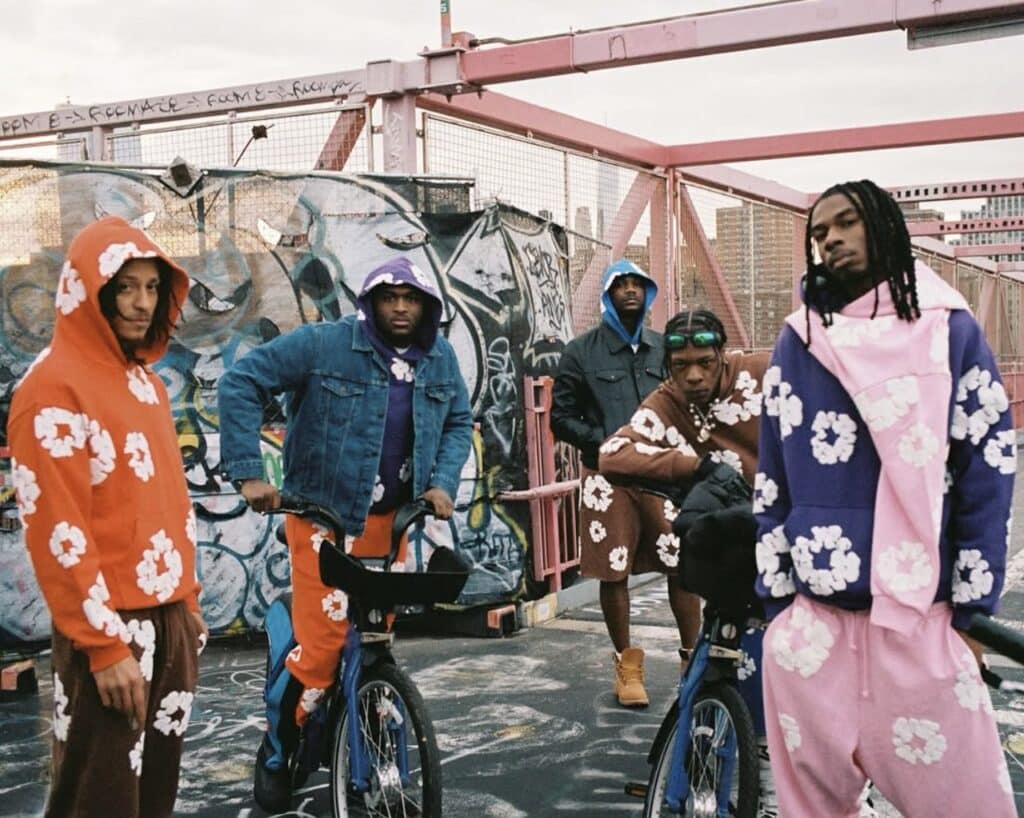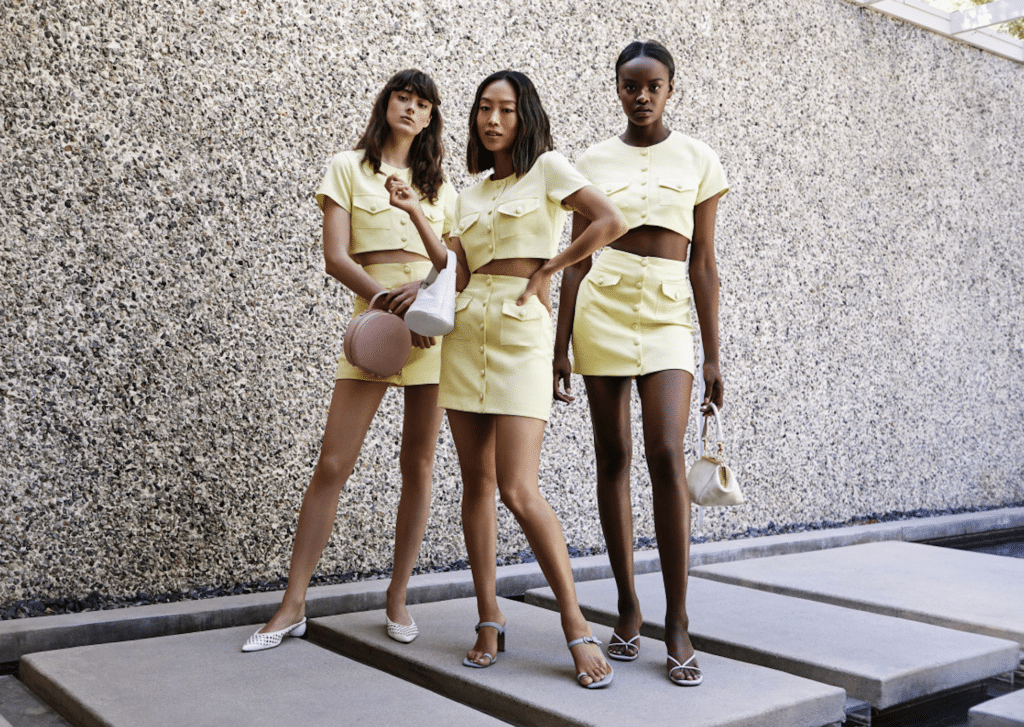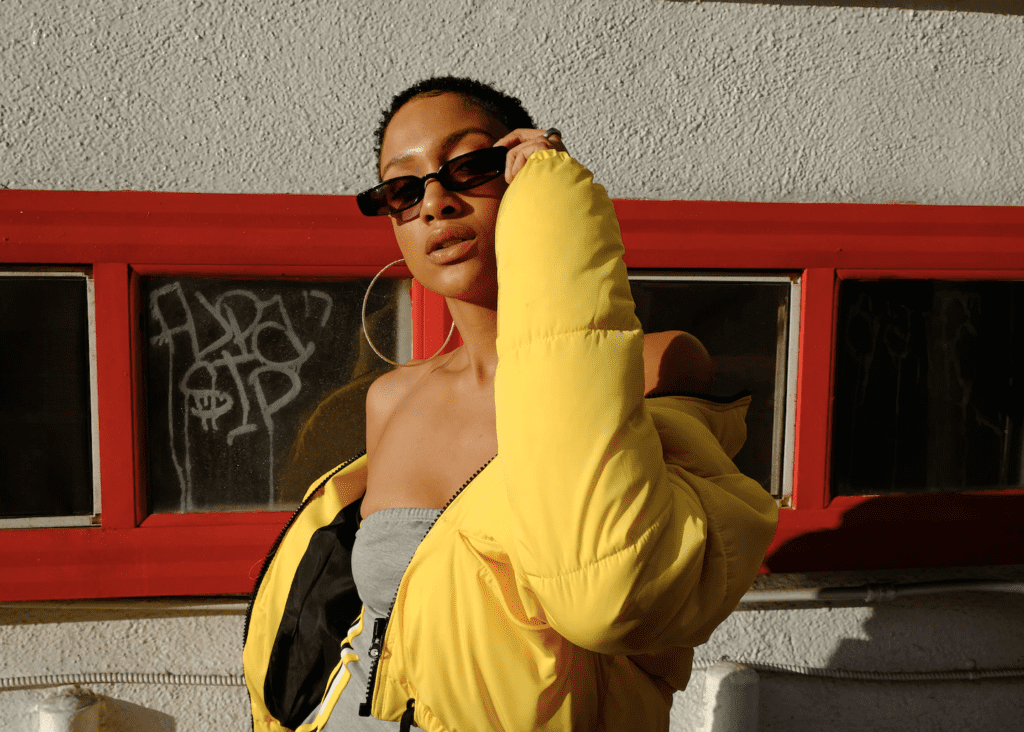A high-stakes fight between Valentino, S.p.A. and Mario Valentino is far from over. In a status report filed with Judge John Kronstadt of the U.S. District Court for the Central District of California last month, lawyers for both of the Italian brands revealed that proceedings are currently underway in federal court in the U.S., as well as in Italy – and in one instance, will require at least two more years to resolve. The latest update from the like-named but unaffiliated brands comes two and a half years after Valentino filed suit against Mario Valentino in the U.S., accusing it of breaching a co-existence agreement they signed more than 40 years ago in an attempt to avoid legal complications stemming from their nearly-identical monikers.
The case got its start back in July 2019, when Valentino filed suit in federal court in California, alleging that Mario Valentino and its U.S. licensee Yarch Capital are on the hook for false advertising, unfair competition, and design patent infringement (thanks to Mario Valentino’s own studded offerings) for “actively engaging in a campaign to trade off Valentino’s goodwill in the U.S. handbag market.” The matter stems largely from the co-existence agreement that the parties entered into four decades ago – and centers on whether Mario Valentino is breaching it by way of its lookalike products and “Valentino”-centric marketing campaigns.
In accordance with the global co-existence agreement that they signed in 1979, when Valentino Garavani’s brand was better far known with couture than handbags, Valentino and Mario Valentino agreed that Mario Valentino was permitted to “use and register the full name Mario Valentino or M. Valentino or Valentino or the letters MV or V exclusively on the outside, together with Mario Valentino on the inside and on the packaging [of] all goods made of leather or imitation leather or other material.” The same agreement limits Mario Valentino’s use, blocking the brand from using “the ‘V’ and ‘Valentino’ marks together” on those same types of goods.”
Put simply, Mario Valentino – which argues that it began using the Valentino name on leather goods years before its younger rival – can use the “Valentino” name on leather goods, such as handbags, assuming it includes the full “Mario Valentino” name on the inside of the product.
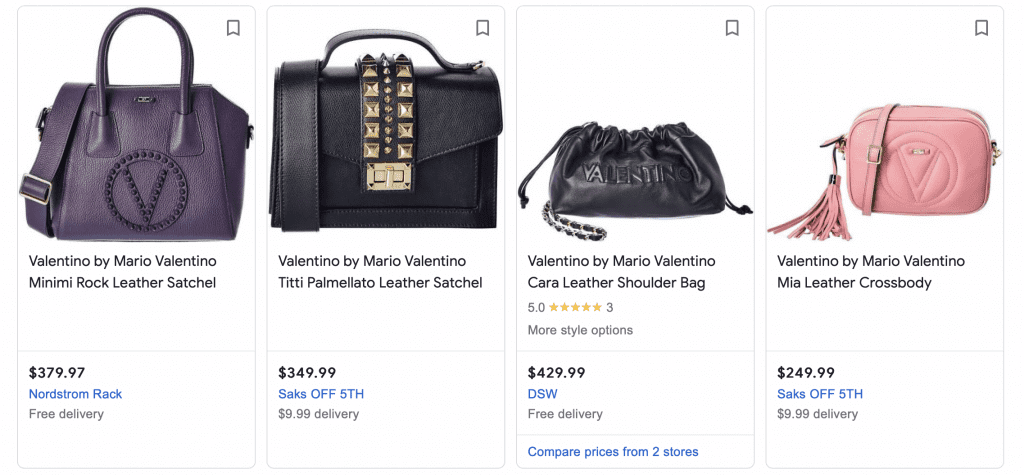
In its lawsuit in the U.S., Valentino has argued that Mario Valentino is in breach of the agreement by “marketing handbags with packaging and related literature that prominently identifies the bags – which can be found at Saks OFF Fifth and Nordstrom Rack – as coming from ‘Valentino’” and making use of Valentino’s “V” logo, while “downplaying or omitting entirely the fact that they are bags licensed by Mario Valentino S.p.A,” not Valentino S.p.A.”
Proceedings in Milan
Not limited to litigation in the U.S., though, the lawsuit that Valentino filed back in 2019 follows from earlier proceedings in Italy, and in particular, a decision from the Court of Milan, which held that Mario Valentino was running afoul of the parties’ agreement by “selling numerous models of handbags labeled in a manner that is not permitted under the co-existence agreement,” thereby, giving rise to “the very type of consumer confusion the agreement was intended to prevent.”
As for the status of the parties’ bi-national battle, counsel for Valentino and Mario Valentino told Judge Kronstadt that since their last status report in September 2021, Valentino and its subsidiaries have sought intervention from the Court of Milan, which they hope will invalidate a September 2021sealed award from an Italian arbitration panel. “The Parties anticipate that [those] proceedings will require approximately two years to resolve in the first instance court,” the parties told the California federal court, noting that the initial hearing is currently scheduled for March 15, 2022.
Meanwhile, in a “separate litigation” in Italy concerning Mario Valentino’s use of the “V” and “Valentino” marks on handbags, the parties report that the Court of Appeal of Milan held in December 2020 that the co-existence agreement prohibits Mario Valentino from using more than one of the signs, “V”, “MV”, “Valentino”, and “Mario Valentino, on the outside of a single handbag. The appeals court also determined that the co-existence agreement prohibits Valentino from using “V” signs other than the specific “V” logo attached to the co-existence agreement in relation to handbags.
“Both parties appealed the judgment to the Court of Cassation (Italy’s highest Court) in May 2021,” and anticipate that the court will initiate proceedings within one to two years of the date of their appeals. In the meantime, the Court of Appeal of Milan stayed the enforceability of the December 2020 decision “insofar as it prohibits Mario Valentino from using more than one of the signs ‘V,’ ‘MV,’ ‘Valentino,’ and ‘Mario Valentino’ together on the outside of a single handbag, under the condition that said bags always include the sign ‘Mario Valentino’ on the inside and on the packaging.”
Back in the U.S.
Still yet, one of the latest major developments in the parties’ stateside fight came this past spring when the court sided issued a mixed ruling, in which it granted Valentino’s motion to dismiss Mario Valentino’s contributory trademark infringement, false advertising, and unfair competition claims on the basis that the defendants failed to show “constructive knowledge on behalf of Valentino” in connection with the contributory trademark infringement claim; “have not alleged any false advertising;” and did not “sufficiently allege [Valentino’s] ‘personal participation’ in the unfair practices identified.” Not a total loss for the defendants, the court granted them leave to amend the claims.
At the heart of Mario Valentino and Yarch (the “defendants”)’s contributory liability counterclaims is the way that one of Valentino’s authorized retailers was allegedly marketing Valentino handbags. According to Valentino’s motion, Mario Valentino “alleges that it ‘recently discovered that at least one of Valentino’s authorized retailers” – the Revolve-affiliated e-commerce site FORWARD by Elyse Walker – “is infringing [its] trademarks by advertising [Valentino’s] products as ‘VALENTINO BAGS’ but making no reference to the term ‘GARAVANI.’”
In a win for the defendants, the court refused to strike their unclean hands defense (one of the 25 affirmative defenses set out by the defendants), in connection with which they have argued that Valentino actually breached the parties’ co-existence agreement by way of handbag advertisements that “do not include, or include in substantially reduced size, the term ‘GARAVANI.’”
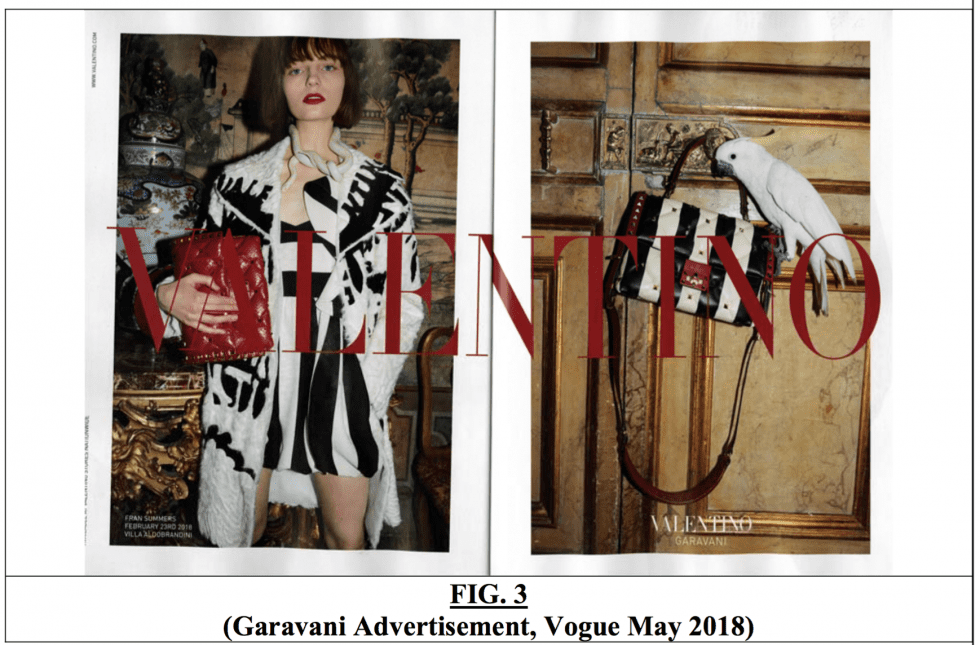
Despite a provision in the co-existence agreement that requires that “in any advertising for its leather handbags,” Valentino “must utilize the term ‘GARAVANI’ in addition to ‘VALENTINO’ to minimize consumer confusion between the parties,” the defendants have argued that “beginning in Fall 2017,” Valentino has “prominently placed ‘VALENTINO’ in its advertising for handbags, removing and/or significantly reducing the appearance of the required term ‘GARAVANI,’” or removing any reference to “Garavani” altogether.
The Bigger Picture
No small matter, the cases come as Mario Valentino has asserted that Valentino’s “handbags have accounted for over $700 million in revenue in the past five years, with over $100 million in the U.S., alone,” and that its allegedly improper use of the “Valentino” mark – without “Garavani” – is part of a larger scheme by the brand “to expand its leather handbag business and reap millions of dollars in profits, so that it could sell its company for a higher price to investors.”
As we previously noted, where Valentino’s inability to simply use the “Valentino” name on its own (i.e., without “Garavani” or “Couture”) in connection with certain categories of goods seems like it would have the biggest impact is on the value of the brand, itself, in connection with a potential sale. (This is particularly relevant given that much of the value of a fashion company – or any consumer-facing company for that matter – is intrinsically tied to its branding and the intellectual property rights that come with that.)
While Valentino has no shortage of trademark rights and registrations in its name – from Valentino for use on eyewear, and Valentino Garavani on handbags, footwear, and clothing to the V logo on nearly any category of goods – that another party would take ownership of if it acquired the Valentino brand. However, it is difficult not to imagine that an acquiring party may take issue with the fact that one core element is missing from the brand’s portfolio: the ability to use Valentino for use of leather goods and footwear.
That has not necessarily proven problematic for Valentino to date. After all, Valentino’s former owner private equity firm Permira sold the Valentino Fashion Group – which included “100 percent of Valentino SpA and the M Missoni license business” – to Qatari investment group to Mayhoola for Investments in July 2012 for a reported 700 million euros ($856 million). The deal made headlines for the sheer size of it.
The acquisition was deemed “a win-win situation for Valentino,” according to Armando Branchini, deputy chairman of Milan consultancy InterCorporate. Meanwhile, Reuters revealed at the time that the 700 million euro figure paid by Mayhoola was 31.5 times the 2011 EBITDA for Valentino, thereby putting the selling price “well above LVMH’s purchase of jewelry maker Bulgari [in 2011] at 28.2 times its EBITDA,” one of the more recent and relevant transactions at the time. It would also prove to be quite a bigger than the EBITDA-times-14 deal that Mayhoola entered into in June 2016 when it acquired Balmain; the price tag on that acquisition was 460 million euros ($522 million).
The case is Valentino S.p.A. v. Mario Valentino S.p.A., et al, 2:19-cv-6306 (C.D.Cal.).











